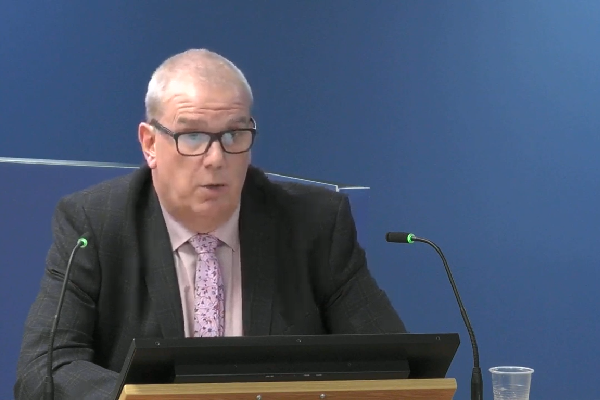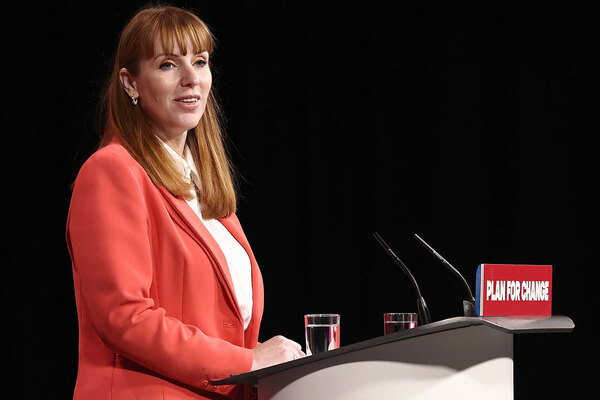NHBC continued accepting combustible Kingspan insulation on high rises despite being warned it was ‘accident waiting to happen’
The National House Building Council (NHBC) continued to permit the use of combustible Kingspan insulation on high rises despite its own fire engineer warning that the product was “an accident waiting to happen”.
Emails presented to the Grenfell Tower Inquiry today showed John Lewis, a specialist surveyor at the large building control and warranty firm, wrote that testing had shown that the firm’s K15 insulation “continues to burn” after the flame was removed in November 2014.
He described claims that the product was suitable for use on high-rise buildings as “all garbage”.
But the NHBC, which offers building control sign off and warranties on thousands of projects around the UK, did not adjust its approach to accepting Kingspan for use on high-rise buildings until April 2015; even then it only insisted on a ‘desktop study’ to permit its use.
Mr Lewis was writing in response to a query from a surveyor at another building control firm regarding a certificate that suggested the product could be used on high rises and was a “material of limited combustibility”.
Mr Lewis wrote: “It’s all garbage. Hertford LABC [which wrote the certificate] didn’t know what they were talking about…
“Kingspan have since done at least two tests (I suspect they’ve done more but have kept the results close to their chests because they performed so badly!) using a steel frame and a ventilated cavity and there is an issue with ongoing burning.
“Once the fire source is extinguished the insulation continues to burn up in the cavity and in one case continued over the cavity barrier and to the top of the rig.”
Mr Lewis added: “It’s all an accident waiting to happen and we’re meeting with all the [plastic insulation] manufacturers to try and get something sorted. But in the meantime, they continue to state that it’s fine. And most [building control bodies] accept that at face value without sifting through the detail.”
The inquiry has previously seen internal Kingspan documents detailing tests such as this, including one where the mock cladding system was described as a “raging inferno”.
NHBC had also been warned by Dr Barbara Lane, a senior fire engineer at Arup, that the use of combustible insulation was “an accident waiting to happen”.
Dr Lane, who now serves as an expert witness to the inquiry, had been approached by Kingspan to provide an assessment of its test evidence which it hoped would allay concerns about the use of the product on tall buildings.
But Dr Lane wrote on 30 October 2014: “Arup are actually deeply concerned about the lack of understanding of assemblies and the ongoing incorrect use of test reports for individual materials being applied to more complex building envelope forms.
“The use of combustible materials in high-rise buildings is now simply an accident waiting to happen.”
Steve Evans, head of technical operations at NHBC, was today asked why he did not act more decisively to limit the use of Kingspan insulation in high rises when he received the warnings.
“Did you take it seriously that this was an accident waiting to happen, or did you dismiss it as as an exaggeration?” asked Richard Millett QC, lead counsel to the inquiry.
“I took this whole issue seriously. That’s why I spent most of the previous 10 months trying to work with industry to find a solution,” said Mr Evans.
He had been contacted by senior civil servant Brian Martin in July of the same year regarding the use of plastic insulation and had told him that K15 was widely used, but assured him “there is no reason to suggest buildings built with Kingspan K15 are at risk at this time”.
The inquiry saw a further exchange of emails between Mr Martin and Mr Evans in December without the new information being raised. “Why did you not mention to him here what you have learnt about the true position in relation to the risk of combustible materials in high rise residential buildings?” asked Mr Millett.
“At this point it wasn’t appropriate to go back to Brian and tell him what we were intending to do at NHBC because we were still developing that internally,” replied Mr Evans.
The inquiry has previously seen that NHBC had been alerted to the fact that K15 was being approved outside the scope of cladding systems in which it had been tested as early as summer 2013.
It entered a lengthy back and forth with the insulation manufacturer, seeking additional test data and threatening to stop accepting the product for use in high rises if it was not provided.
But it did not stop approving its use while it was waiting for these assurances, nor issue any warnings about the projects it had already signed off.
Mr Evans had explained that he believed the prior approvals were in line with building regulations, as they were given on the basis of a certificate from the British Board of Agrément (BBA).
It was only when this certificate was amended to narrow its scope that NHBC began raising questions. Mr Evans said the NHBC did not want to “leap to conclusions” and was willing to “give Kingspan a chance” to demonstrate that its product could comply.
“I suggest to you that you didn’t want to leap to conclusions as you put it, because it would have been bad for business suddenly to stop approving the use of K15 [on buildings] above 18 metres… it would cause an upheaval and a barrage of inquiries and you wanted to avoid that,” said Mr Millett.
“We wanted to avoid confusion in the industry. And we wanted to work with industry to resolve that confusion. It was not it was not done to protect market share. It was not done with any other reason than to allow industry to give us the information so we could make an informed decision, which we did in 2015,” replied Mr Evans.
“You didn’t want to leap to conclusions, as you put it, I have to suggest to you because it would raise the spectre of a major historic legacy problem for NHBC warrantied or accepted buildings. What you might call a cladding crisis,” continued Mr Millett.
“I’m a building control professional. I’ve been in the industry 32 years. At no time was any approach made to me to find a solution to this problem to protect NHBC, either its integrity, or its historic buildings. If anyone had I would not be working for that employer. So I disagree with that statement,” replied Mr Evans.
Yesterday, when questioned about why the firm had not done more to reject the use of Kingspan’s insulation following the warnings, he denied that the firm had been “captured by Kingspan” and “used as their poodle”.
The inquiry also saw that Mr Evans helped write ‘Technical Guidance Note 18’, a piece of industry guidance which said untested cladding systems could be used with the approval of a suitably qualified specialist.
He claimed today that this was consistent with official guidance and based on industry practice surrounding other products such as fire doors.
“I don’t think you need to be an expert to know that the way of fire develops is a very complex matter,” said inquiry chair Sir Martin Moore-Bick.
“Did it ever occur to you that it might not actually be very feasible to produce a desktop study telling you how a system would react if it was set alight, based on tests conducted on completely different systems?”
“Not at that time, no, it didn’t,” Mr Evans replied. “An exterior wall facade is complicated, but so are other parts of the building structure, which would equally be addressed with a desktop assessment.”
Kingspan K15 was used as part of the cladding system on Grenfell Tower due to a product substitution and ultimately comprised around 5% of the insulation material used on its facade.
However, it was very widely used on other buildings and was the market-leading plastic insulation product for high-rise buildings in the years before the Grenfell fire in 2017.
Mr Evans said that an internal audit in March 2015 revealed 300 NHBC projects where the product had either been used or was proposed for use on high-rise buildings.
The inquiry continues with further evidence from Mr Evans tomorrow.
Sign up for our weekly Grenfell Inquiry newsletter
Each week we send out a newsletter rounding up the key news from the Grenfell Inquiry, along with the headlines from the week
Already have an account? Click here to manage your newsletters













